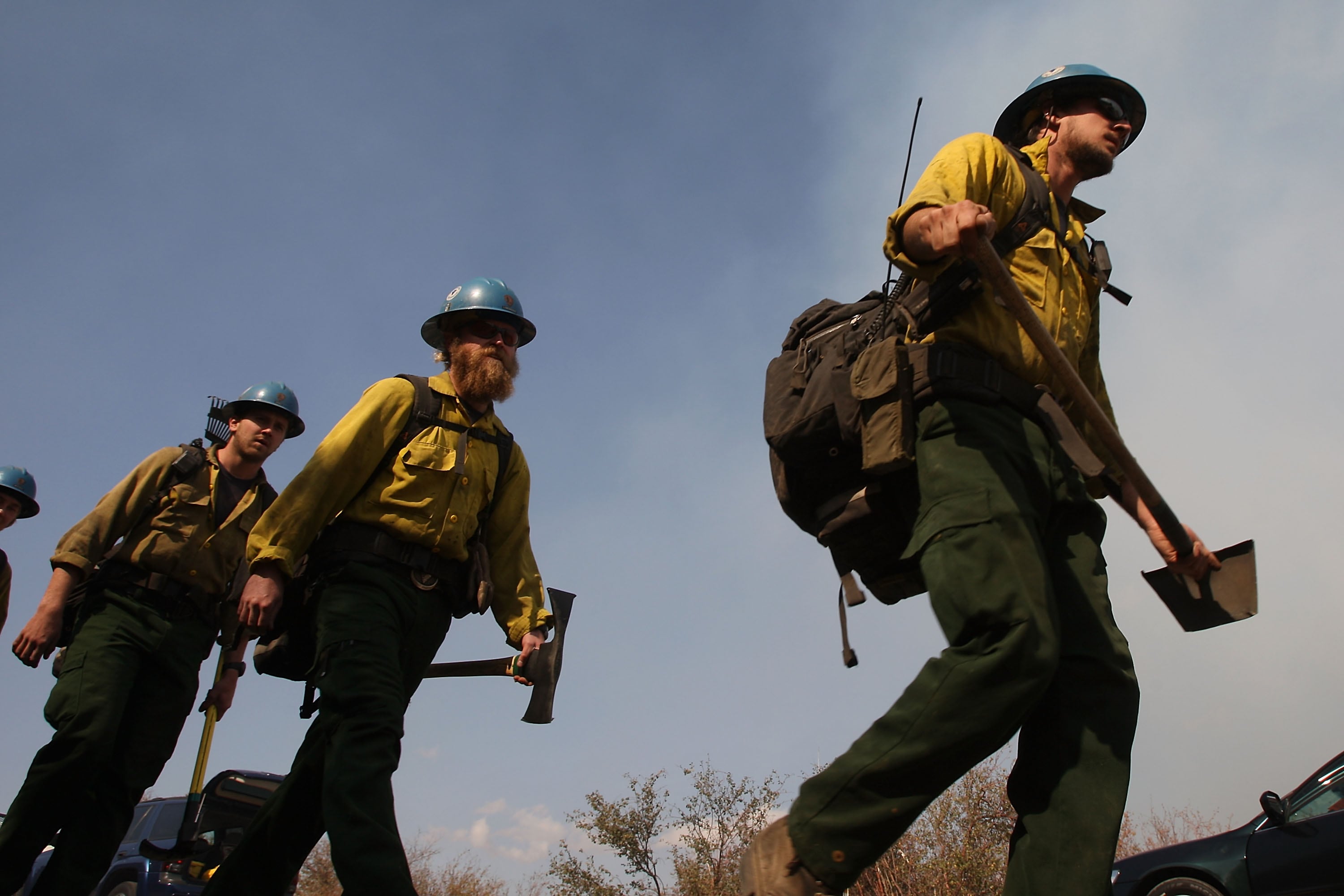The Department of Agriculture’s U.S. Forest Service has more than 10,000 professional firefighters that respond to thousands of wildfires each year in the National Forest System, as well as on land under the jurisdiction of federal, tribal, state and local agencies.
As firefighters deal with longer fire seasons, larger fires and extreme fire behavior that threaten wildlands, rural and residential areas, it is critical that they have the right equipment to manage and contain wildfires. They must be properly trained and equipped to respond to wildfires safely and effectively.
The Forest Service uses a variety of aircraft and helicopters to manage wildfires, as well as fire retardants to reduce the intensity and rate of the spread of wildfires. At the same time, they need the best personal protective equipment to fight fires, such as fire-resistant pants and shirts, a helmet, eye protection, gloves, leather boots, and fire shelter.
RELATED

Backlogs in the procurement process can potentially contribute to delays in the delivery of equipment that supports critical services such as aviation, applying fire retardants, and tactical and logistical resources for fighting forest fires, as well as delay payments to contractors.
That’s the situation Forest Service officials faced entering 2022. With a backlog of 15,000 actions, the branch chief of the service’s Incident Procurement Administration Branch recognized that the branch’s employees alone could not accomplish the job of completing the task orders. As a result, the Forest Service implemented an automation platform to create process improvements and handle time-consuming workflows involving procurement contracts supporting tactical and logistical resources for fighting forest fires.
Automation Center of Excellence
The Forest Service brought the backlog up to date and established a Center of Excellence to tackle and automate other work, such as setting up document understanding automations that can process invoice data. Automation is now used to resolve audit findings, bring the incident procurement backlog current, and build a system that reduces errors to ensure future compliance.
The increased accuracy and transparency allows the branch to move faster, ultimately paving the way for delivery of payment to Forest Service contractors in a much more streamlined way, and ensure that equipment is delivered to firefighters and other workers in a timely manner.
The Center of Excellence, a grassroots effort that got executive buy-in, will help expand automation beyond incident procurement to Forest Service procurement as a whole. Other financial systems and processes are ripe for automation as well, including travel card usage, data entry, human resource tasks, and processes that directly engage with fighting fires.
The Incident Procurement Administration team is also considering ways to calculate the return-on-investment from its automation journey, including taxpayer dollars saved, hours of manual work saved, and other metrics to demonstrate the value of such projects to other government leaders.
Digital assistants a growing trend
Engaging employees in a new way of working alongside “digital assistants” is a trend that is reaping operational and workforce improvements for agencies across the federal government. Civilian, defense and intelligence agencies are harnessing automation, artificial intelligence, machine learning and other tools to achieve mission outcomes and improve delivery of services to citizens.
For example, The Defense Logistics Agency is using automation to meet the logistical needs of the military services while the Air Force is encouraging non-technical service personnel to develop and use an automation platform for various use cases.
The DLA is about four years into its journey using software bots to automate repetitive tasks, freeing personnel to focus on high value work. As of 2022, DLA had incorporated bots into 136 processes, with 123 operating in unattended mode, meaning with no human interaction.
For example, DLA Information Operations’ Equipment Management Solutions Team uses automation to process lease and purchase requests for more than 53,000 devices like printers and scanners used by DLA employees and military and federal customers. Automation lets the EMS team research any missing billing on the Debit Memo Report, which generates sales orders for all assets in their inventory.
Generating a sales order for each missing bill is a long process that can be manually intensive, according to EMS officials. EMS billing specialists now have additional time to communicate with customers, research other billing issues and concentrate on additional work-related tasks.
RELATED

Meanwhile, at the Air Force, airmen have received training in automation, taken computer science courses from Harvard and Yale, and learned more about automation tools via road shows. Additionally, select bases are using automation to save airmen from manually processing tens of thousands of background checks per day. The Bouncer Bot is a remote process automated robot software that completes background security checks on guests entering Air Force installations, such as Hanscom Air Force Base.
Federal agencies are in various stages of their automation journey with some agencies just beginning to learn how to scale automation technology to achieve enterprise transformation. Bringing together data, systems, process, and people is imperative for deriving enterprise-value from automation and driving transformation.
Automation does not only unburden government employees from tedious work—automation is changing the nature of how work gets done.
Todd Schroeder is Area Vice President, Public Sector, at UiPath, a New York-based supplier of robotic process automation software.
Have an opinion?
This article is an Op-Ed and the opinions expressed are those of the author. If you would like to respond, or have an editorial of your own you would like to submit, please email C4ISRNET and Federal Times Senior Managing Editor Cary O’Reilly.





